Planning for a Resilient Future
Across it's expansive forests, high mountain peaks, and arid shrubsteppe, Cascadia is experiencing severe impacts from our expanding human footprint and rapidly changing climate. To keep iconic species such as salmon, grizzly bear, wolverine, lynx, and sage grouse in our landscape requires that we act together across boundaries, with strong situational awareness of where the threats and opportunities exist, and the ability to manage adaptively. We co-developed TerrAdapt:Cascadia with our partners - including state, provincial, and federal agencies, First Nations and Tribes, and NGOs - to improve the region's capacity to monitor the changing landscape at scale, project future impacts of climate change, and prioritize strategic places for protection and restoration actions that increase resiliency in our natural systems.
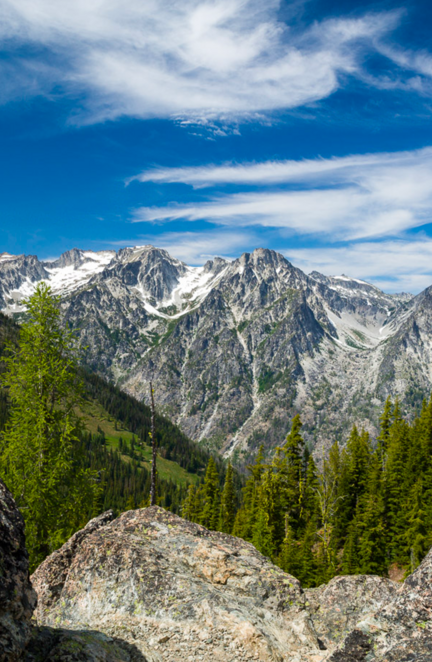
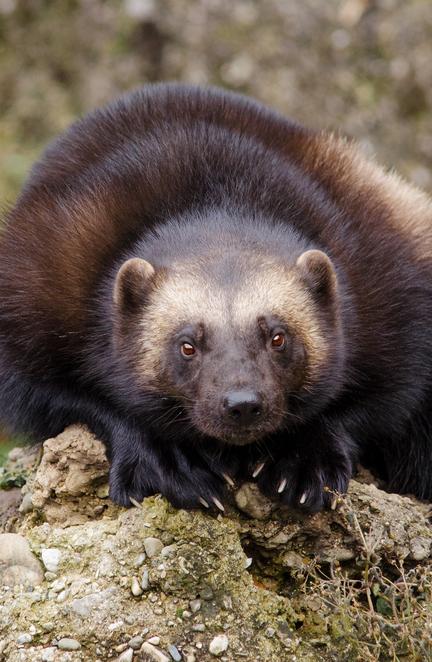
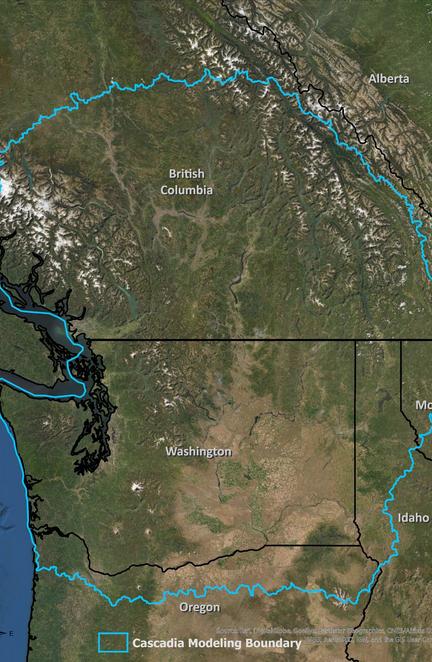
Enabling Adaptive Management
TerrAdapt's dynamic data products have applications throughout the adaptive management cycle. Our regional monitoring and assessment products can be used to form a landscape-scale conservation plan, and then monitor and assess it's effectiveness in conserving habitat and connectivity. Our map and dashboard portals help users evaluate progress towards goals, report status and trends and provide feedback that can be used to adapt the plan to changing conditions over time. Because all our data products update automatically each year, managers always have the latest data seamlessly across our entire region. This enables a more modern and nimble form of adaptive management that can keep up with the pace and scale of change.
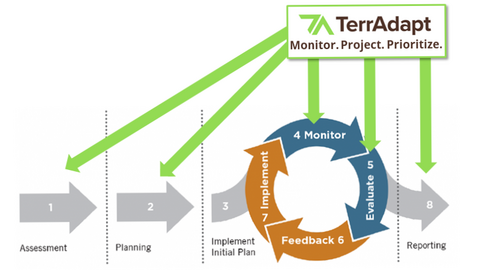
Monitoring our Forests
TerrAdapt's forest structure monitoring metrics - including canopy cover (right), canopy height, and tree diameter - help our partners track changing forest conditions so they can manage their lands adaptively in ways that support our region's diversity of wildlife and native habitats. For example, the Washington Department of Natural Resources will use these metrics in their Forest Action Plan, which will guide actions to restore and conserve Washington's forests.
Tracking forest canopy cover
These forests are essential to protecting biodiversity, fighting climate change, and safeguarding our air and water
- Hillary Franz, Commissioner of Public Lands
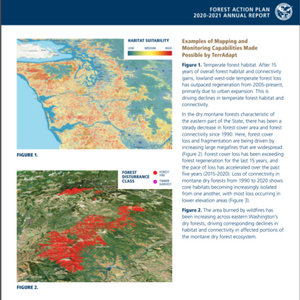
Projecting Future Conditions
Our rapidly changing climate is driving widespread impacts to regional species and ecosystems. For example, warming temperatures are leading to reduced snowpack, more wildfires, and other impacts that are driving losses in lynx habitat in Washington and southern British Columbia. TerrAdapt allows lynx managers to see how predicted climatic changes, including precipitation and temperature (left), could shift the range of this species in our region, helping managers make climate-smart investment in lynx conservation.
Projecting regional impacts to lynx habitat
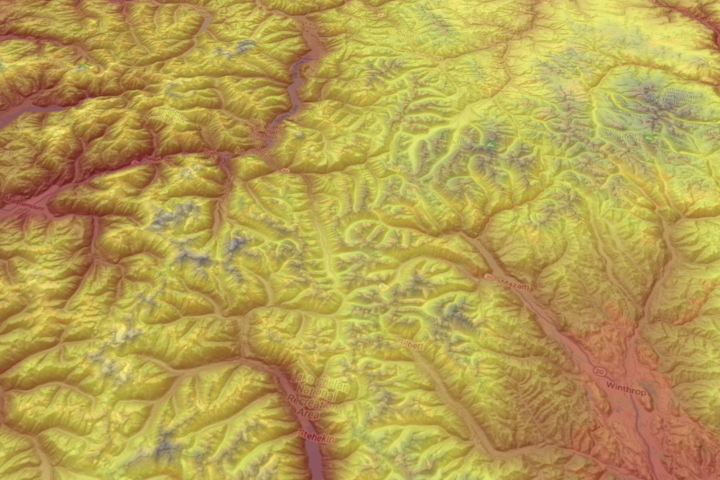
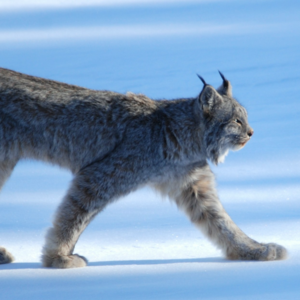
Prioritizing Action
TerrAdapt works with partners to co-develop regional spatial conservation designs that prioritize landscapes for conservation actions like protecting or restoring habitat and mitigating movement barriers. Mapping these priorities using TerrAdapt's dynamic data allows the priorities to be dynamic too. For example, the map at right shows dynamic spatial priorities TerrAdapt co-developed with the Washington Shrubsteppe Restoration and Resiliency Initiative.
Prioritizing conservation actions for Washington's shrubsteppe ecosystem
Working collaboratively across boundaries through shared stewardship to do the right work, in the right place, at the right scale contributes to landscape scale wildlife conservation efforts
- Mike Kuttle, Washington Department of Fish and Wildlife
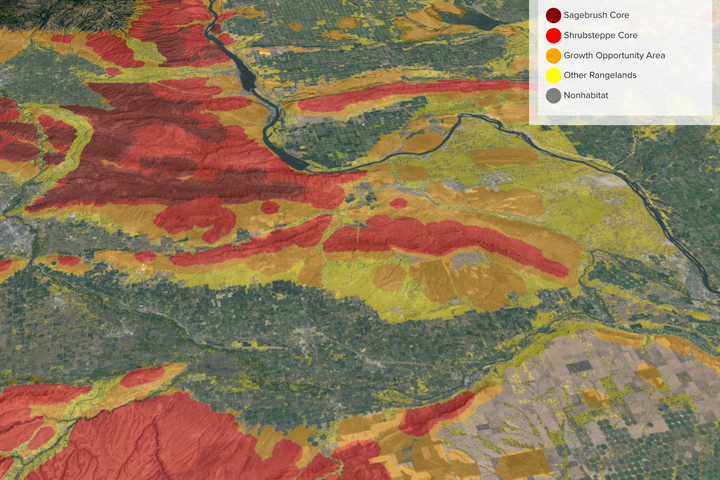
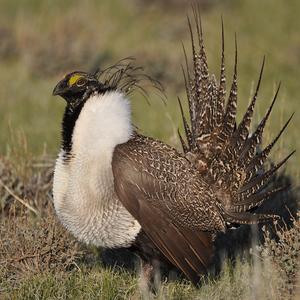
Our Work in Cascadia
TerrAdapt is working with dozens of partners across Washington and southern British Columbia. Explore our recent projects to learn more about our work in Cascadia.
Recent Projects
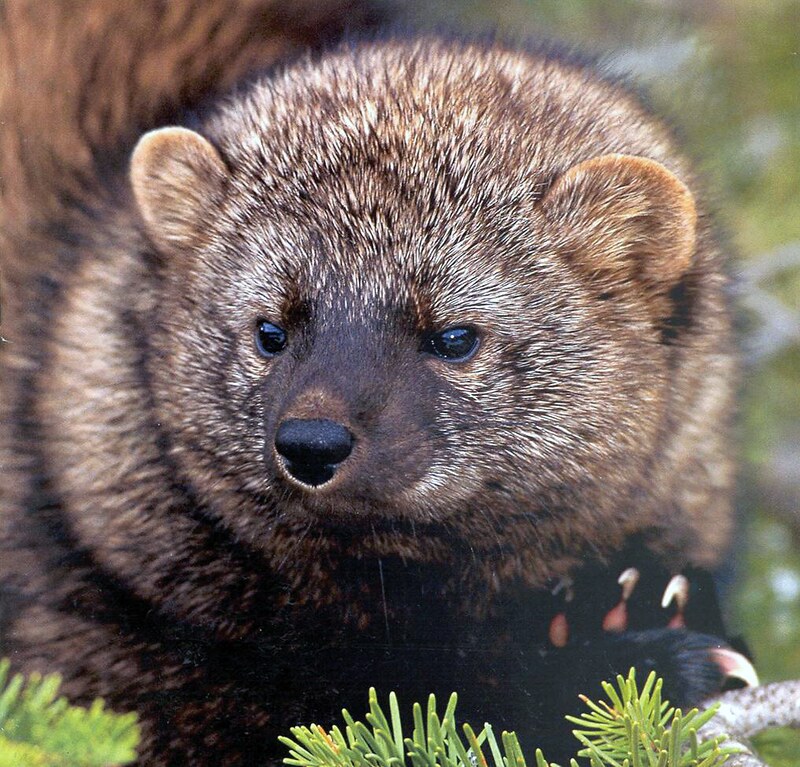
- Info
- Dash
- Model
Modeling Species Habitat
PACIFIC FISHER
In partnership with state, provincial and federal partners in Washington and British Columbia, we have built a fisher habitat model that can be used to support recovery and conservation efforts across the region.
Monitoring Habitat Change
PACIFIC FISHER
The Dashboard allows managers to monitor and summarize changes in habitat suitability over time using the TerrAdapt habitat model.
Explore Fisher Habitat ChangeSpecies Modeling Approach
PACIFIC FISHER
To build species models, TerrAdapt convenes experts to produce temporal habitat suitability and connectivity models. The Pacific fisher model was developed using a collection of telemetry datasets and temporal spatial data products from TerrAdapt from across Cascadia and ranges back to 1984.
Explore Habitat Model Docs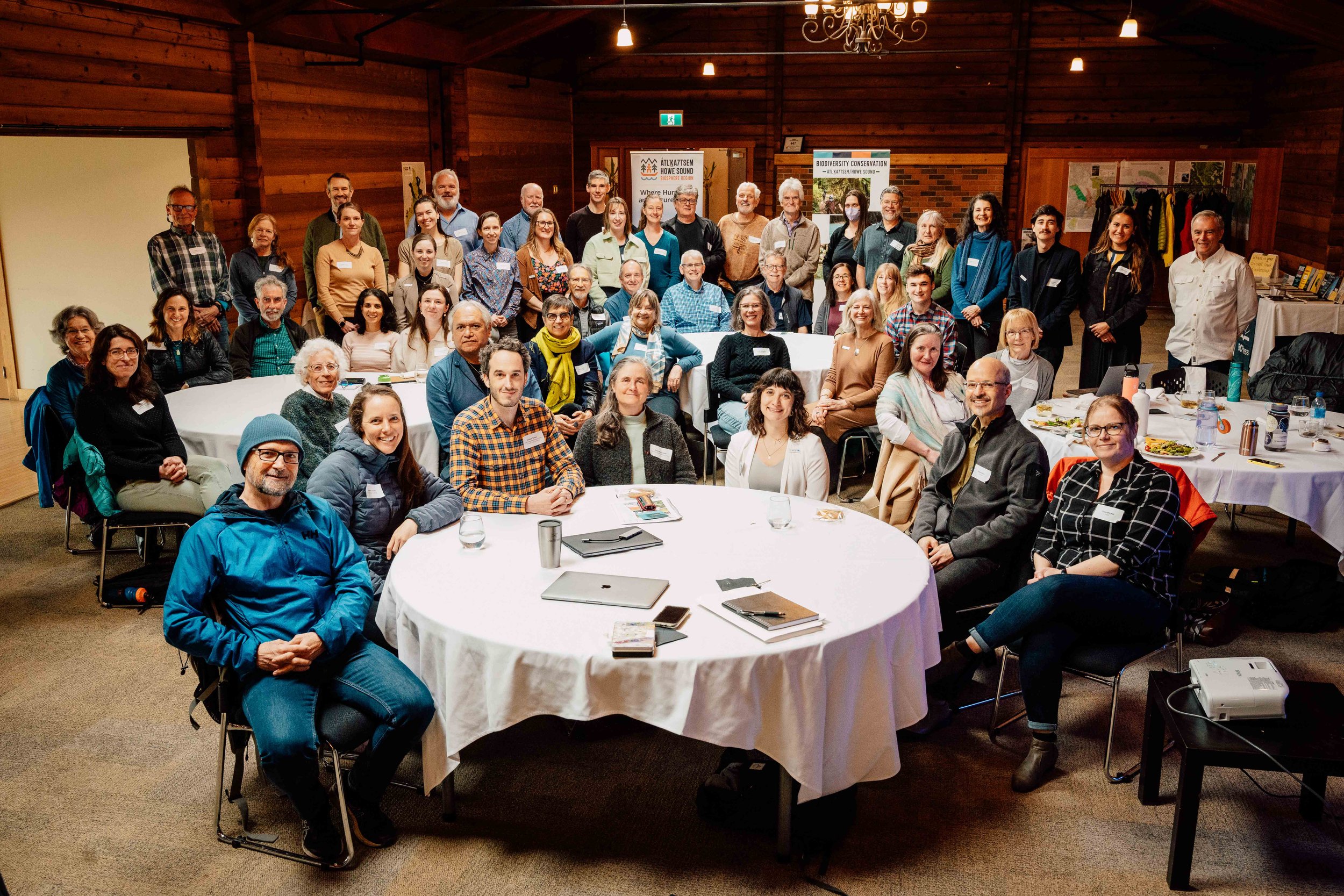
- Info
- Dash
- Map
Coordinated Monitoring
Átl'ka7tsem / Howe Sound Initiative
TerrAdapt is working with the Squamish Environment Society and the Átl'ka7tsem / Howe Sound Biosphere Region Initiative to support regional and local land managers in safeguarding and restoring vulnerable terrestrial habitat and pathways of wildlife using TerrAdapt tools and models.
Adaptive Land Management
Átl'ka7tsem / Howe Sound Initiative
Partners are leveraging their knowledge and TerrAdapt's tools to promote a shared understanding of the causes of biodiversity loss, support dynamic land use planning, and develop regional conservation strategies that align with Canada's 2030 Biodiversity Conservation Strategy.
Explore Forest Connectivity ChangeCreating Baselines
Átl'ka7tsem / Howe Sound Initiative
Visualizing and quantifying forty years of landscape change and future projections of warming climate and ecosystem response is critical information for local and regional partners to create a baseline assessment of the area.
Explore Forest Structure
- Info
- Dash
- Map
Support Land Planning
Stein Nahatlatch Initiative
TerrAdapt is supporting First Nations in Canada to establish Indigenous Protected and Conserved Areas. Leaders of the Stein Nahatlatch Initiative will be able to tap into nearly 40 years of land use data to communicate the importance of their region and support land management.
Account for Changing Climate
Stein Nahatlatch Initiative
Changes in climate patterns are expected to impact forest recovery in the Stein. TerrAdapt's projected climate and precipitation layers, developed from ClimateNA, will help support decision making on post-fire restoration planning in the valley.
Explore Climate ProjectionsRespond to Disturbance
Stein Nahatlatch Initiative
Land use plans must be able to adapt to disturbances such as wildland fire. TerrAdapt's dynamic mapping function supports land planners to identify where annual changes are taking place and how they may affect targets. Fires and logging have had a large impact on the forests in the Stein Nahatlatch valley.
Explore Annual Forest Disturbance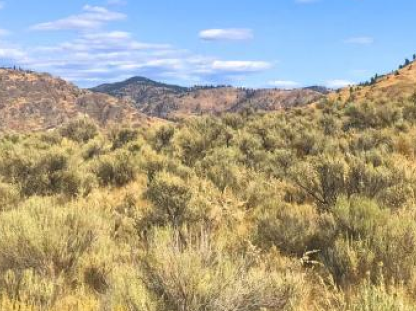
- Info
- Dash
- Map
Prioritizing Actions
SHRUBSTEPPE RESTORATION INITIATIVE
TerrAdapt has partnered with the Washington Shrubsteppe Restoration and Resiliency Initiative to support partners to prioritize the arid lands of Eastern Washington for conservation actions that increase resilience.
Track Ecosystem Change
SHRUBSTEPPE RESTORATION INITIATIVE
Seeing where and when change occurred in the ecosystem is critical for priority setting and tracking progress. As part of this project, TerrAdapt co-developed models of the Shrubsteppe ecosystem to define habitat suitability, core habitat blocks, and connectivity within Cascadia.
Explore Shrubsteppe Habitat ChangeIntegrating Species
SHRUBSTEPPE RESTORATION INITIATIVE
The Greater Sage Grouse is a key species within the Shrubsteppe ecosystem that must be accounted for in spatial priority setting. A model of Sage Grouse habitat suitability and connectivity spanning over 30 years was co-produced with WSRRI to inform the priority-setting exercise.
Explore Sage Grouse Habitat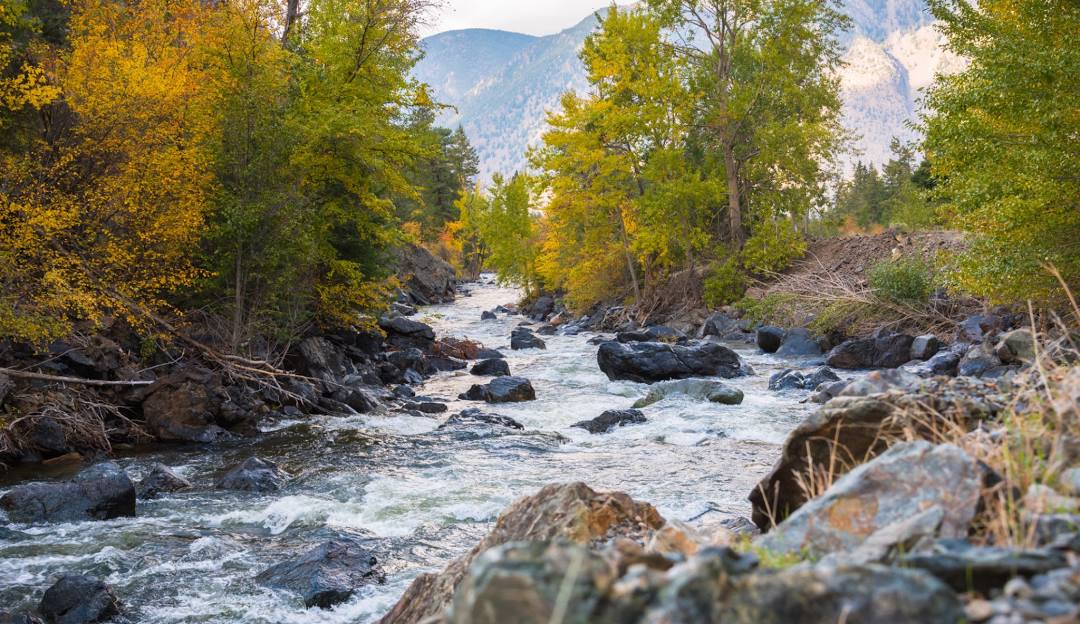
- Info
- Dash
- Map
Protected Area Planning
Ashnola Indigenous Protected Area
TerrAdapt is working with the Lower Similkameen Indian Band to support land monitoring and planning in the Ashnola Indigenous Protected and Conserved Area.
Monitor Disturbance
Ashnola Indigenous Protected Area
Fires in British Columbia have become more common and intense over the last decade, making it difficult to adapt management plans as the landscape changes each year. Quantifying fire and logging disturbance within the Ashnola and broader landscape is critical for land planning.
Explore Forest HarvestSupporting management activities
Ashnola Indigenous Protected Area
TerrAdapt's tools can also be combined with local and regional-level spatial data sources for rapid decision-making in manager's GIS platform of choice. For example, live fire boundaries and road layers can be overlaid with landsat, forest structure, and species layers from TerrAdapt in ArcGIS Online.
Explore TerrAdapt in ArcGISNews from Cascadia
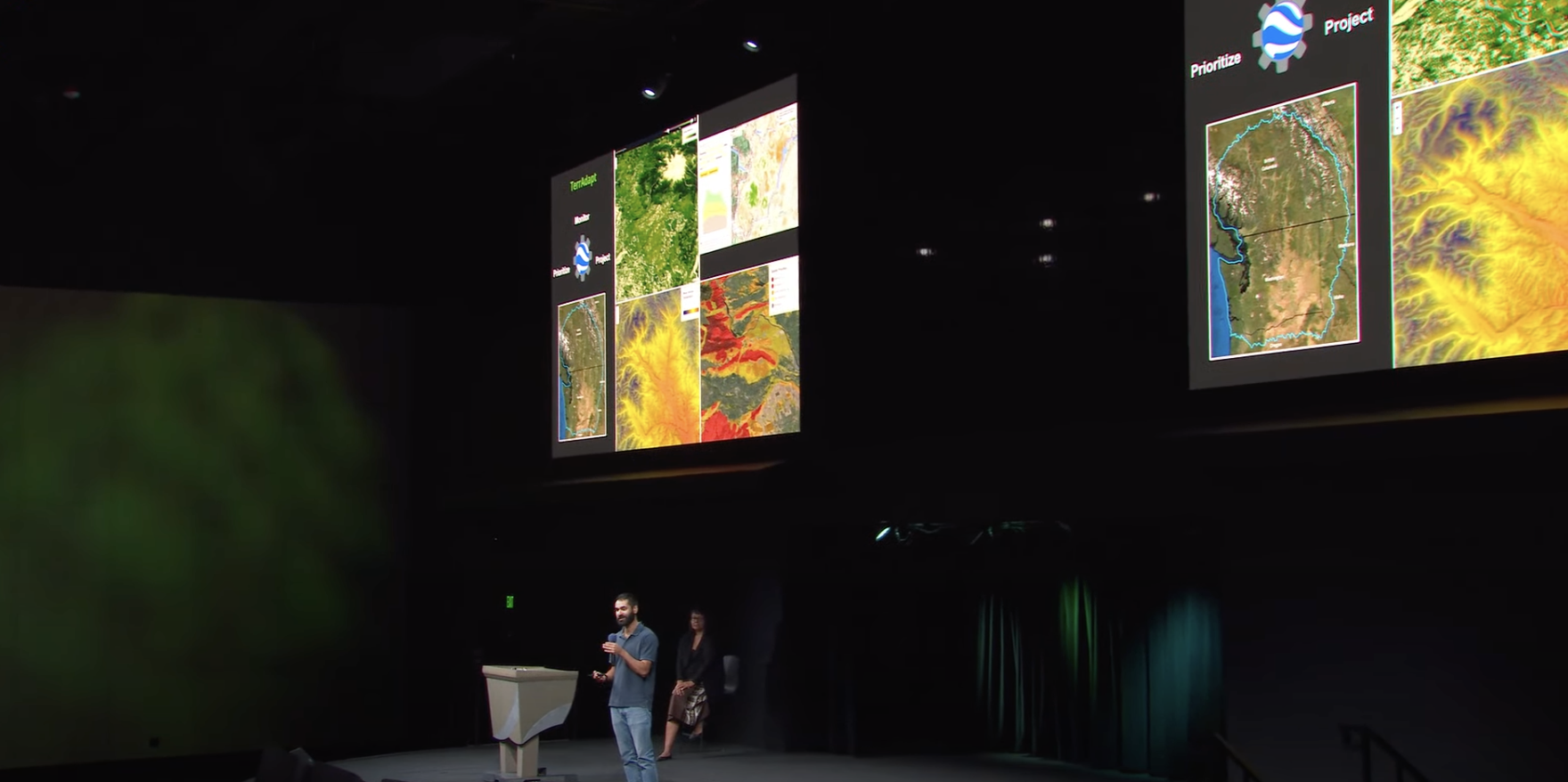
13th October 2023
TerrAdapt at Google's Geo for Good 2023
TerrAdapt presented with partners from the Lower Similkameen Indian Band at Google's Geo for Good 2023 Event in Mountain View, California.
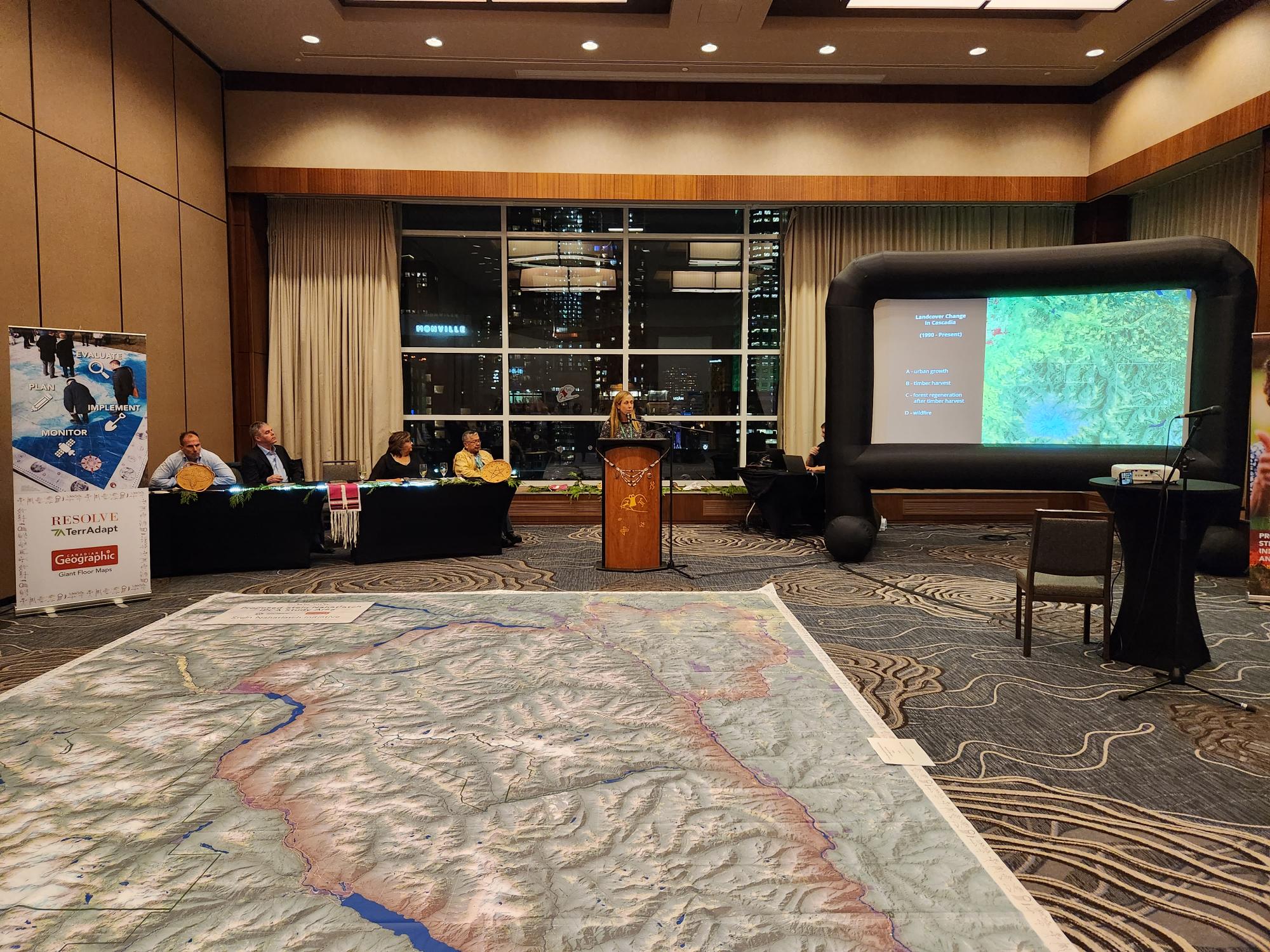
15th December 2022
TerrAdapt at COP15
TerrAdapt will support the Stein Nahatlatch Initiative to establish an Indigenous Protected and Conserved Area

17th October 2023
Supporting an Indigenous Led Restoration Vision for British Columbia
TerrAdapt featured as platform that could support province led restoration planning and monitoring.
Our Partners in Cascadia

Cascadia Partner Forum
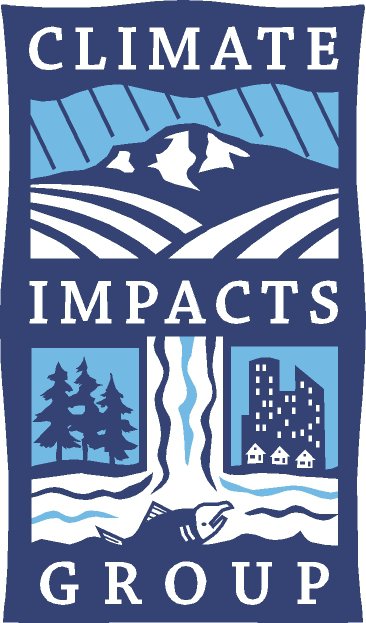
Climate Impacts Group, University of Washington
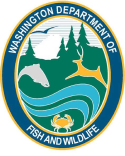
Washington Department of Fish and Wildlife
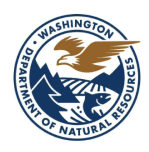
Washington Department of Natural Resources

US Fish and Wildlife Service

Northwest Climate Adaptation Science Center

Wilburforce Foundation

Seattle City Light

RESOLVE

One Earth
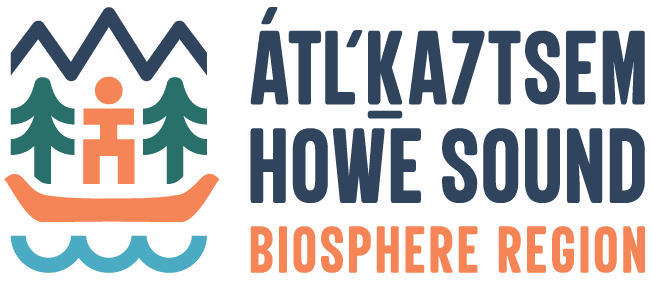
Átl’ka7tsem Howe Sound Biosphere Region

Lower Similkameen Indian Band

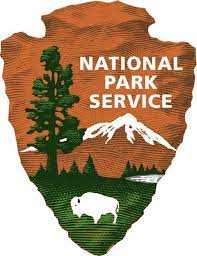
United States National Park Service
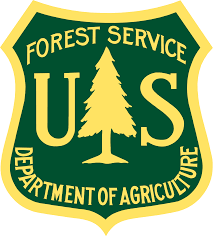
United States Forest Service
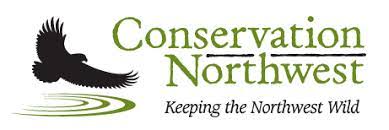
Conservation Northwest

Charlotte Martin Foundation
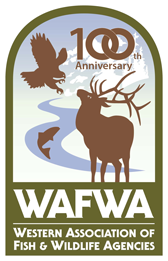
Western Association of Fish and Wildlife Agencies

BC Parks

British Columbia Ministry of Environment and Climate Change Strategy

British Columbia Ministry of Forest Lands and Natural Resource Operations
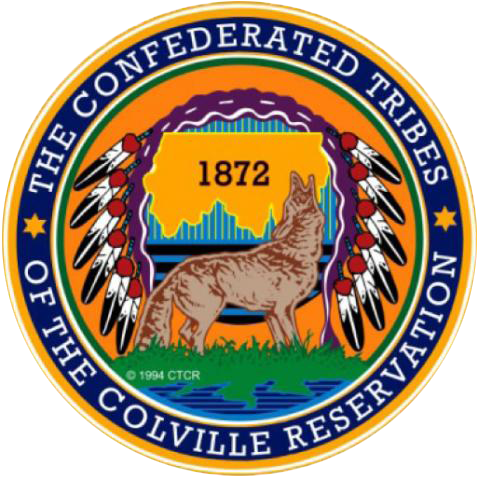
Colville Confederated Tribes

